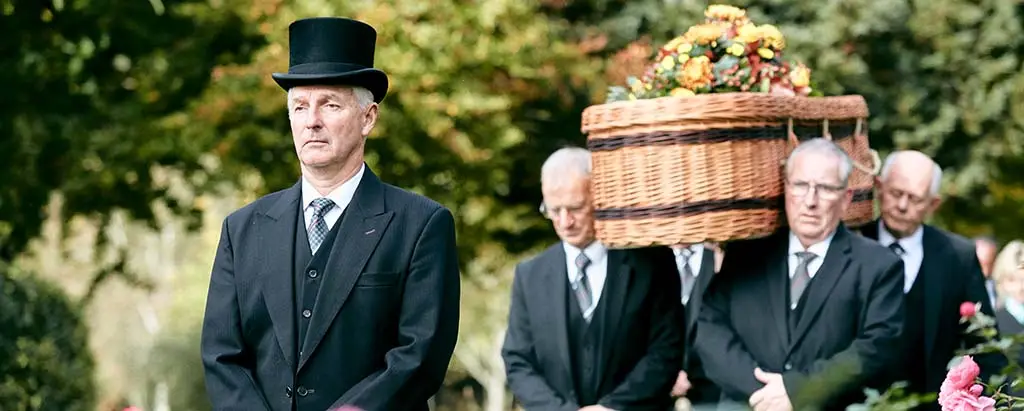Planning a funeral can be an emotionally challenging task, but understanding the key steps can help ease the process. From choosing a funeral director and deciding on burial or cremation to arranging the service and wake, there are several important aspects to consider when organizing a meaningful farewell for a loved one.
Planning Funeral Essentials
When planning a funeral, it’s essential to approach the process step-by-step to ensure a meaningful and well-organized service. Begin by checking if the deceased left any specific funeral instructions in their will. This can provide valuable guidance on their preferences and wishes.
One of the first decisions to make is whether to hire a funeral director or arrange the funeral yourself. A funeral director can provide invaluable support and handle many aspects of the planning process. If you choose to work with a funeral director, select one who is a member of a recognized professional association, such as the National Association of Funeral Directors or the National Society of Allied and Independent Funeral Directors. These organizations uphold strict codes of conduct and offer transparent complaints procedures.
Next, determine the type of funeral service you want to hold. This could be based on religious preferences, family traditions, or the deceased’s personal wishes. Consider the venue for the service, which could include a crematorium chapel, place of worship, private home, or other suitable location.
An important aspect of funeral planning is managing costs. Funeral expenses can include funeral director fees, disbursements (third-party costs), and local authority burial or cremation fees. To ensure transparency, ask funeral directors for written estimates and compare costs between different providers. Be aware that you can often customize services and products to fit your budget and preferences.
When planning the service itself, consider creating an order of service. This typically includes details such as the deceased’s name, dates of birth and death, a schedule of the service, speakers, songs, readings, and information about the burial or wake. Personal touches like family photos and meaningful quotes can make the order of service more special.
Don’t forget to plan for the wake or reception following the funeral. This gathering provides an opportunity for friends and family to come together, share memories, and support one another. Choose a venue that suits your needs and budget, whether it’s a private home, pub, social club, or hotel.
Throughout the planning process, involve family members and close friends for support and input. This can help share the emotional burden and ensure that the funeral reflects the wishes of those closest to the deceased. By carefully considering each aspect of the funeral, you can create a meaningful tribute that honors your loved one’s life and provides comfort to those in mourning.
Personalized Funeral Transport Options
When planning a funeral, personalized transport options can add a meaningful touch to the final journey. Traditional hearses and limousines remain popular choices, but many families now opt for alternatives that reflect the deceased’s personality or interests. Some unique options include:
- Horse-drawn carriages for a classic, elegant procession
- Motorcycle hearses for motorcycle enthusiasts
- Vintage vehicles like VW campervans for a retro touch
- Themed vehicles such as fire engines or tractors for specific professions
- Eco-friendly options like electric hearses or bicycle-drawn carriages
- Double-decker buses or coaches to accommodate more mourners
These personalized choices can help create a memorable tribute and provide comfort to grieving families by celebrating the unique life of their loved one. When considering transport options, it’s important to discuss preferences with the funeral director, who can assist in arranging suitable vehicles and ensuring a dignified final journey.
Creating a Memorial Video Tribute
Creating a memorial video tribute is a heartfelt way to honor a loved one’s life and legacy. To begin, gather a collection of photos, videos, and memorabilia that showcase different aspects of the person’s life. Organize these materials chronologically or thematically to tell their story effectively. When selecting music, choose songs that were meaningful to the deceased or evoke appropriate emotions.
Consider incorporating personal touches to make the tribute more meaningful:
- Include video interviews or messages from family and friends
- Highlight the person’s passions, hobbies, and achievements
- Add captions or quotes to provide context for photos
- Use subtle transitions between images to maintain a smooth flow
- Keep the focus on the deceased, using high-quality images when possible
Remember to test the video at the venue before the service to ensure proper playback. By creating a thoughtful and personalized memorial video, you can provide a touching tribute that celebrates the life of your loved one and offers comfort to those in attendance.
Selecting Meaningful Funeral Music
Selecting meaningful funeral music can profoundly personalize a service and evoke powerful emotions. When choosing songs, consider the deceased’s preferences, personality, and cultural background. Popular choices include classical pieces like Schubert’s “Ave Maria” or Elgar’s “Nimrod,” as well as contemporary songs such as “Time to Say Goodbye” by Andrea Bocelli or “Angels” by Robbie Williams.
To create a well-rounded musical tribute:
- Choose an entrance song that sets the tone for the service
- Select reflective pieces for moments of contemplation during the ceremony
- End with an uplifting exit song to celebrate the person’s life
Remember that music can be played at different points throughout the service, including during the procession, eulogy, or final farewell. Collaborating with family members and the officiant can help ensure the chosen music appropriately honors your loved one and provides comfort to those in attendance.
Incorporating Personal Narratives
Incorporating personal narratives into a funeral service can create a deeply meaningful and memorable tribute to the deceased. These stories provide a unique window into the individual’s life, highlighting their character, values, and the impact they had on others. By weaving personal anecdotes throughout the service, you can paint a vivid picture of your loved one that resonates with attendees and offers comfort during this difficult time.
When gathering personal narratives, reach out to family members, friends, colleagues, and community members who knew the deceased well. Ask them to share specific memories, funny anecdotes, or moments that exemplify the person’s character. These stories can range from childhood adventures to recent experiences, showcasing different facets of their life.
As you compile these narratives, look for common themes or traits that emerge. Perhaps your loved one was known for their sense of humor, their generosity, or their passion for a particular hobby. Use these themes to structure the storytelling within the service, creating a cohesive narrative that captures the essence of the person.
Consider incorporating personal narratives in various ways throughout the funeral:
- During the eulogy: Share 2-3 meaningful anecdotes that highlight the deceased’s personality, values, and accomplishments.
- As part of a memory-sharing segment: Invite attendees to share their own stories, either by speaking during the service or by writing them down to be read aloud.
- Through a visual presentation: Create a slideshow or video tribute that pairs photos with captions describing specific memories or moments.
- In the order of service: Include short quotes or anecdotes alongside photos in the printed program.
When sharing these stories, strive for authenticity and honesty. It’s okay to include lighthearted or even humorous anecdotes alongside more poignant memories. This balance can provide a fuller picture of the person and offer moments of levity during an otherwise somber occasion.
Remember that while the funeral tribute is about the deceased, you can make it personal to you as well. Share your first impressions of them or what it was like to have them as a parent, friend, or colleague. This approach allows attendees to see the person from different angles, celebrating the multi-faceted nature of their life.
By incorporating personal narratives, you create a funeral service that goes beyond mere formality. Instead, it becomes a warm, personal memorial that truly captures the essence of your loved one, providing solace and a sense of connection for all who attend. This approach to storytelling can help in the grieving process, allowing mourners to find comfort in shared memories and the lasting impact of a life well-lived.
Funeral Poetry Examples
Funeral poems can provide comfort, express grief, and celebrate the life of a loved one. Here are some examples of popular poems often chosen for funerals:
“Do Not Stand at My Grave and Weep” by Mary Elizabeth Frye is a widely-used funeral poem that offers solace by suggesting the deceased lives on in nature:
“Do not stand at my grave and weep
I am not there. I do not sleep.
I am a thousand winds that blow.
I am the diamond glints on snow.”
This poem reassures mourners that their loved one’s essence continues in the world around them.
“Warm Summer Sun” by Walt Whitman is a short, gentle poem often read at graveside services:
“Warm summer sun,
Shine kindly here,
Warm southern wind,
Blow softly here.
Green sod above,
Lie light, lie light.
Good night, dear heart,
Good night, good night.”
Its brevity and soothing imagery make it suitable for a moment of quiet reflection.
“She Is Gone” by David Harkins offers a perspective on grief that encourages celebrating a life rather than mourning a loss:
“You can shed tears that she is gone
Or you can smile because she has lived
You can close your eyes and pray that she will come back
Or you can open your eyes and see all that she has left.”
This poem can help mourners focus on positive memories and the legacy left behind.
For those seeking a more structured, traditional poem, “Funeral Blues” by W.H. Auden expresses the depth of loss:
“Stop all the clocks, cut off the telephone,
Prevent the dog from barking with a juicy bone,
Silence the pianos and with muffled drum
Bring out the coffin, let the mourners come.”
This poem powerfully conveys the feeling that the world should stop to acknowledge the magnitude of the loss.
“Afterglow” by an
unknown author is a hopeful poem that expresses a desire to be remembered fondly:
“I’d like the memory of me to be a happy one.
I’d like to leave an afterglow of smiles when life is done.”
This poem can bring comfort by focusing on positive memories and the impact of a life well-lived.
When selecting a poem for a funeral, consider the deceased’s personality, beliefs, and the tone you want to set for the service. These poems offer a range of emotions and perspectives, allowing you to find one that resonates with your feelings and honors your loved one’s memory.
In Summary
Planning a funeral involves several key steps to create a meaningful and organized tribute. Essential considerations include:
- Checking Instructions: Begin by reviewing any funeral instructions left by the deceased.
- Hiring a Funeral Director: Decide whether to work with a funeral director, preferably one affiliated with a professional association for reliable guidance.
- Type of Service and Venue: Choose the style of service and location based on personal, religious, or cultural preferences.
- Managing Costs: Request detailed estimates from funeral providers to compare costs and customize services to fit your budget.
- Personalizing the Service: Incorporate elements such as an order of service, meaningful music, personal narratives, and visual tributes like memorial videos.
- Transportation and Wake: Consider personalized transport options and arrange a wake or reception to allow family and friends to gather and remember.
Personal touches like unique transport options, heartfelt music, and memorial videos can make the service more meaningful. Adding funeral poetry and stories that capture the deceased’s essence can provide comfort and celebrate their life. By thoughtfully addressing these aspects, families can create a fitting and personal farewell.



